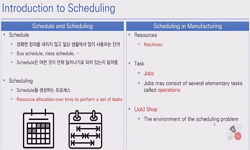최근 기후변화가 심화됨에 따라 가뭄으로 유발되는 피해가 증가하고 있다. 현재 국내의 가뭄 강도를 결정하기 위해 표준강수지수(Standardized Precipitation Index, SPI)를 기준으로 분류를 수행하고 ...
http://chineseinput.net/에서 pinyin(병음)방식으로 중국어를 변환할 수 있습니다.
변환된 중국어를 복사하여 사용하시면 됩니다.
- 中文 을 입력하시려면 zhongwen을 입력하시고 space를누르시면됩니다.
- 北京 을 입력하시려면 beijing을 입력하시고 space를 누르시면 됩니다.

비상급수의 규모를 고려한 기상학적 가뭄 강도 수립 = Establishing meteorological drought severity considering the level of emergency water supply
한글로보기https://www.riss.kr/link?id=A108811934
- 저자
- 발행기관
- 학술지명
- 권호사항
-
발행연도
2023
-
작성언어
Korean
- 주제어
-
등재정보
KCI등재
-
자료형태
학술저널
-
수록면
619-629(11쪽)
- 제공처
- 소장기관
-
0
상세조회 -
0
다운로드
부가정보
국문 초록 (Abstract)
최근 기후변화가 심화됨에 따라 가뭄으로 유발되는 피해가 증가하고 있다. 현재 국내의 가뭄 강도를 결정하기 위해 표준강수지수(Standardized Precipitation Index, SPI)를 기준으로 분류를 수행하고 있다. 현재 국내에서는 최근 6개월 동안의 누적강수량을 기준(SPI-6)으로 관심, 주의, 경계, 심각의 기상학적 가뭄의 강도를 분류하고 있다. 그러나 강수량만을 기초자료로 활용하기 때문에 가뭄 강도를 분류하는 데 한계가 있다는 문제점이 있다. 따라서 본 연구에서는 SPI에 따른 국내 기상학적 가뭄 예・경보 기준의 한계점을 극복하고자 국가가뭄정보포털(National Drought Information Portal, NDIP)에서 제공하는 비상급수 피해자료를 수집하여 가뭄의 강도를 분류하였다. 그리고 SPI의 인자인 강수량과 증발산량 산정에 사용되는 인자인 온도, 습도 등을 min-max 정규화로 지수화한 후 유전 알고리즘(Genetic Algorithm, GA) 기반으로 각 인자들에 대한 계수를 산정하였다. 비상급수에 따른 가뭄의 강도를 분류하여 종속변수로 활용하고, GA에 의한 각 기상인자들의 계수를 활용하여 새로운 가뭄 강도 분류 지수(Drought Severity Classification Index, DSCI)를 도출하고자 하였다. DSCI를 도출한 후 누적분포함수를 활용하여 분위별 경계를 강도 단계 분류 기준으로 제시하였다. 본 연구에서 제시한 DSCI를 활용하면 기존 SPI보다 가뭄 강도를 정확하게 분류할 수 있어, 재난 담당자들의 의사결정을 지원할 수 있을 것으로 판단된다.
다국어 초록 (Multilingual Abstract)
Recent intensification of climate change has led to an increase in damages caused by droughts. Currently, in Korea, the Standardized Precipitation Index (SPI) is used as a criterion to classify the intensity of droughts. Based on the accumulated preci...
Recent intensification of climate change has led to an increase in damages caused by droughts. Currently, in Korea, the Standardized Precipitation Index (SPI) is used as a criterion to classify the intensity of droughts. Based on the accumulated precipitation over the past six months (SPI-6), meteorological drought intensities are classified into four categories: concern, caution, alert, and severe. However, there is a limitation in classifying drought intensity solely based on precipitation. To overcome the limitations of the meteorological drought warning criteria based on SPI, this study collected emergency water supply damage data from the National Drought Information Portal (NDIP) to classify drought intensity. Factors of SPI, such as precipitation, and factors used to calculate evapotranspiration, such as temperature and humidity, were indexed using min-max normalization. Coefficients for each factor were determined based on the Genetic Algorithm (GA). The drought intensity based on emergency water supply was used as the dependent variable, and the coefficients of each meteorological factor determined by GA were used as coefficients to derive a new Drought Severity Classification Index (DSCI). After deriving the DSCI, cumulative distribution functions were used to present intensity stage classification boundaries. It is anticipated that using the proposed DSCI in this study will allow for more accurate drought intensity classification than the traditional SPI, supporting decision-making for disaster management personnel.
동일학술지(권/호) 다른 논문
-
지하철 역사 내 침수 흐름 분석 및 침수 위험도 평가 방법 비교
- 한국수자원학회
- 신재현
- 2023
- KCI등재
-
피해규모를 고려한 용수공급시스템 누수복구 우선순위 선정
- 한국수자원학회
- 김률
- 2023
- KCI등재
-
자유면 대수층에서 지형 경사와 강우를 고려한 수리경사 변동 분석
- 한국수자원학회
- 김병우
- 2023
- KCI등재
-
OpenFOAM을 활용한 포말대 이중 댐-붕괴 수치모형실험
- 한국수자원학회
- 옥주희
- 2023
- KCI등재




 ScienceON
ScienceON




